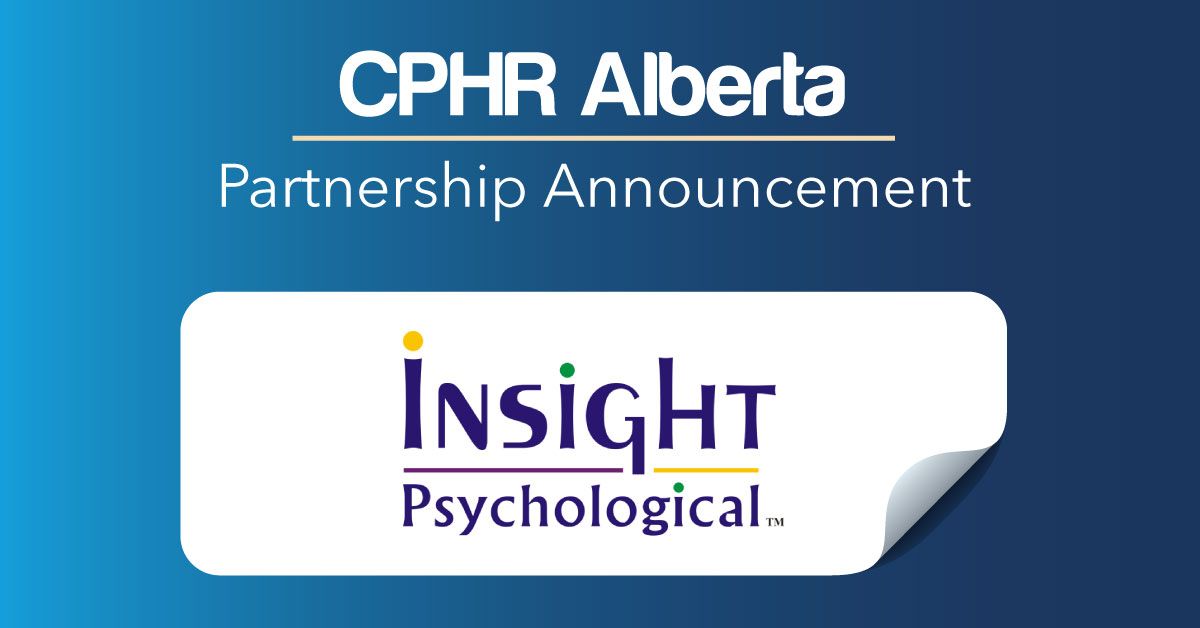
CPHR Alberta Announces New Partnership with Insight Psychological

CALGARY, Alberta – CPHR Alberta, a professional association dedicated to strengthening the human resources profession, is excited to announce a new partnership with Insight Psychological, a psychological care provider.
Insight Psychological is an award-winning organization when it comes to mental health and the well-being of individuals. At Insight Psychological, our mission is to enhance psychological wellness through effective, high-quality, and specialized care. Insight continues to work hard to achieve the vision of being the most trusted and sought-after psychological clinic in every community we serve.
Insight recognizes the challenges that one may face on their own or in a workplace environment. Insight will be offering a variety of services at a preferred rate to CPHR Alberta members . These services include discounted access to their digital mental health library PsychOwl, employee mental health and addictions issue case consults, workshops, and specialized counseling services. Insight will also be providing a free MyPsychPulse mental health and work stress scan to all CPHR Alberta members. Through the use of the MyPsychPulse scan, individuals will be able to gain a better understanding of their current mental health and work stress situation and organizations can use the tool to help your organization determine the collective mental health and work stress condition of your employees or members.
Insight is dedicated to helping individuals achieve their individual mental health goals! To kick off the partnership, Insight Psychological will be hosting a session on April 25th; reconnecting with wellness after the pandemic. Where attendees can learn the importance of self-care, challenge misconceptions around individuals who practice self care, and the importance of developing a self care action plan.
Learn more about Insight Psychological at insightpsychological.ca
The views and opinions expressed in this blog post belong solely to the original author(s) and do not necessarily represent the views and opinions of CPHR Alberta.





